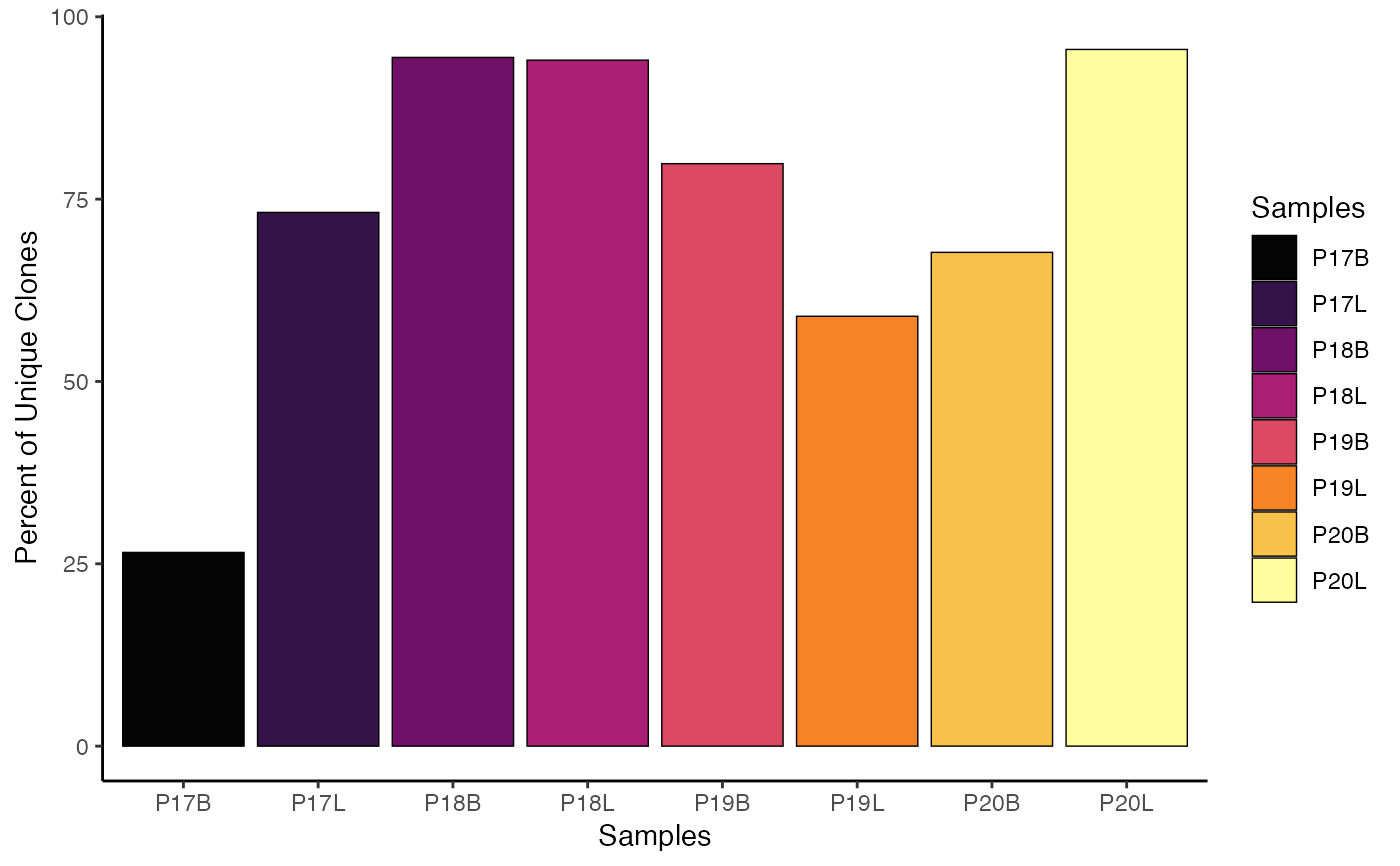This function quantifies unique clones. The unique clones can be either reported as a raw output or scaled to the total number of clones recovered using the scale parameter.
clonalQuant(
input.data,
cloneCall = "strict",
chain = "both",
scale = FALSE,
group.by = NULL,
order.by = NULL,
exportTable = FALSE,
palette = "inferno",
...
)Arguments
- input.data
The product of
combineTCR(),combineBCR(), orcombineExpression().- cloneCall
Defines the clonal sequence grouping. Accepted values are:
gene(VDJC genes),nt(CDR3 nucleotide sequence),aa(CDR3 amino acid sequence), orstrict(VDJC + nt). A custom column header can also be used.- chain
The TCR/BCR chain to use. Use
bothto include both chains (e.g., TRA/TRB). Accepted values:TRA,TRB,TRG,TRD,IGH,IGL(for both light chains),both.- scale
Converts the graphs into percentage of unique clones
- group.by
A column header in the metadata or lists to group the analysis by (e.g., "sample", "treatment"). If
NULL, data will be analyzed by list element or active identity in the case of single-cell objects.- order.by
A character vector defining the desired order of elements of the
group.byvariable. Alternatively, usealphanumericto sort groups automatically.- exportTable
If
TRUE, returns a data frame or matrix of the results instead of a plot.- palette
Colors to use in visualization - input any hcl.pals
- ...
Additional arguments passed to the ggplot theme
Value
A ggplot object visualizing the total or relative number of clones
or a data.frame if exportTable = TRUE.
Examples
# Making combined contig data
combined <- combineTCR(contig_list,
samples = c("P17B", "P17L", "P18B", "P18L",
"P19B","P19L", "P20B", "P20L"))
# Using clonalQuant()
clonalQuant(combined,
cloneCall="strict",
scale = TRUE)
